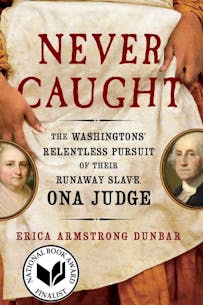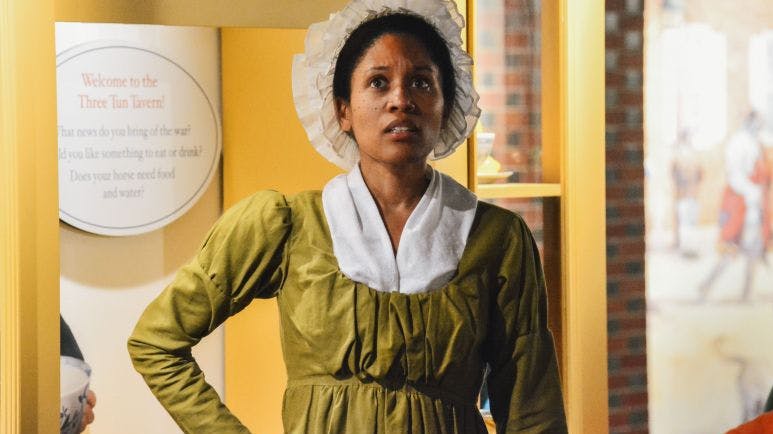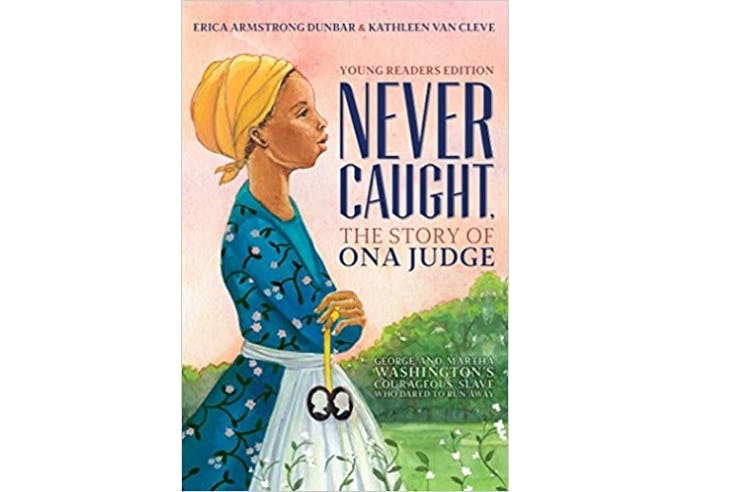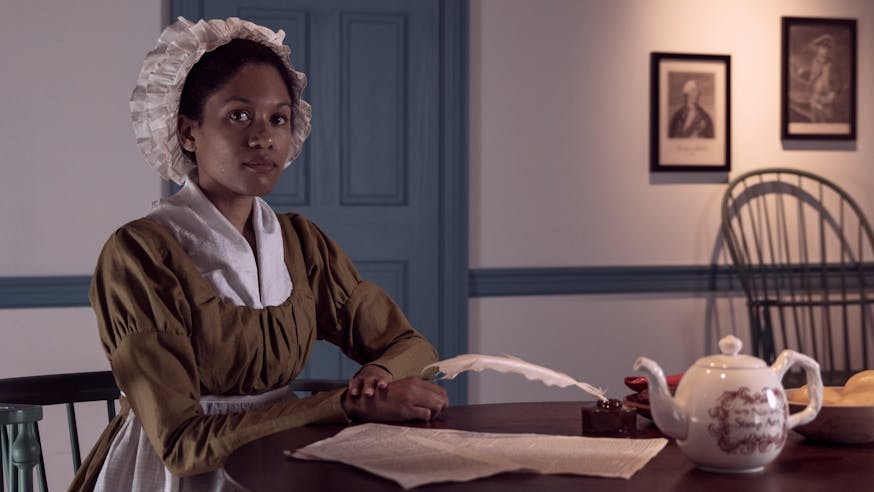Read the Revolution
Never Caught
August 22, 2018
Purchase the book through IndieBound.
In Never Caught, Dr. Erica Armstrong Dunbar paints a vivid picture of the life of Ona Judge, one of the nine enslaved people whom President Washington and Martha Washington brought with them to Philadelphia in 1790 when the city became the nation’s capital. For six years, Judge worked in bondage in the Washingtons’ Philadelphia home on Market Street. Judge escaped from the Washington household in 1796 in search of her freedom and lived the rest of her life with the threat of recapture looming over her.
By making Ona Judge’s story accessible to a wide audience, Dr. Dunbar brings renewed attention to the Founding Fathers’ deep connections to human slavery. Never Caught discusses the Washingtons’ plan to rotate their enslaved workers back and forth between Mount Vernon and Philadelphia to avoid Pennsylvania’s 1780 “An Act for the Gradual Abolition of Slavery” and preserve their property. The rotation plan was something the Washingtons tried to keep hidden in order to avoid negative reactions from the American public.
The following excerpt examines the growth of anti-slavery sentiment in Philadelphia during the 1780s and 1790s and frames Ona Judge’s decision to run from the President’s House. The city’s large population of free African Americans and its anti-slavery promoters provided inspiration for her decision to escape.
Excerpt
Ona Judge learned quickly that life in Philadelphia was quite different from what she had come to know in New York. Her slave status was somewhat of a rarity in her new city, and unlike New York, there was a much more strident abolition movement. In terms of thinking and legislating freedom for all people, Pennsylvania was advanced compared to New York or New Jersey, becoming the first state to gradually dismantle slavery. Philadelphia took the lead in the state's movement to unhinge lifelong bondage, and by the time Ona Judge moved to High Street, slavery was on its deathbed.
Pennsylvanians wrestled with the moral dilemma of African slavery as early as the seventeenth century. The colony was only seven years old when the first group of Quakers began to question human bondage. Founded by William Penn in 1681, Pennsylvania became a colony known for its significant number of Quakers who did, indeed, own slaves. Many Quaker slaveholders agreed with founder George Fox, who advocated for the humane treatment of those held in bondage. Good treatment was relative, and compared to the life-shortening tobacco farms in Virginia or the rice plantations in the Carolinas, Pennsylvania slavery did enjoy a kinder reputation than did its southern neighbors. Nonetheless, slavery continued, and within the Society of Friends a great debate over human bondage brewed for nearly a century. Beginning in 1688, a number of Germantown Quakers declared slavery oppositional to their religious beliefs, but their cries fell upon deaf ears as Friends began to shun their own members, labeling them troublemakers, going as far as to cause financial calamity to the small business owners who dared to question the morality of slavery. Although they were a consensus-driven religious organization that believed in equality and the "light of God" within all men, the financial gains connected to slavery and the racial stereotypes that bred fear of a free black community halted a meaningful seventeenth-century abolitionist movement.
It was the Quakers living outside the city who took the first bold move to push the Society of Friends to ban African slavery. In 1711, Friends from Chester; County asked the Yearly Meeting to prohibit Quakers from purchasing new slaves. While no formal mandate was issued, it was recommended that Friends withdraw themselves from the slave trade. What the Quakers began on the outskirts of Philadelphia would culminate in the first antislavery law in the new nation.
This monumental piece of legislation, passed March 1, 1780, tackled the explosive issue of slavery and set the standard for gradual emancipation in the North. It still allowed white owners to squeeze every bit of uncompensated labor out of enslaved black bodies until they were twenty-eight years old-middle-aged for the eighteenth century-leaving broken bodies and weary souls to find new ways for living after emancipation.
The process was slow, but Judge found herself living in a city that had promised to end slavery and was in the midst of doing so.
Surrounded by antislavery sentiment and laws that undermined their financial investments, the Washingtons knew they had to work quickly and quietly if they were to protect their wealth and their reputation. The president needed a solution to the problem of slaveholding in Philadelphia-one that would work for many years. So the Washingtons devised a plan: the couple would shuffle their slaves to and from Mount Vernon every six months, avoiding the stopwatch of Pennsylvania black freedom. If an excursion to Virginia proved a hardship for the family, a quick trip to a neighboring state such as New Jersey would serve the same purpose. The hourglass of slavery would be turned over every six months, and the president knew there was no time to waste.
Still in Virginia, the president sent clear and direct orders back to Philadelphia; the slaves at the Executive Mansion needed to leave the state, and soon. Washington decided that his wife should plan an expedited trip home to Virginia, bringing all of their slaves back to the safety of Southern laws. The president was primarily concerned with his adult slaves, who he (erroneously, as it turned out) believed were the only ones capable of freeing themselves under Pennsylvania law.
But while the president was adamant about protecting his human property, he was only two years into his first term, and in no hurry to agitate the powerful antislavery forces in Philadelphia. Washington preferred to handle his private affairs with discretion and "to deceive" the public if necessary. The president directed his secretary to reveal his intentions to no one except his wife, stating, "I request that these Sentiments and this advise may be known to none but yourself & Mrs. Washington."
Read the Revolution is published biweekly by the Museum of the American Revolution to inspire learning about the history of the American Revolution and its ongoing relevance.
Sign Up
Get biweekly Read the Revolution featured excerpts right to your inbox.
Tags
Learn More

"Freedom on the Horizon" Performed by Nastassia Parker

Never Caught

